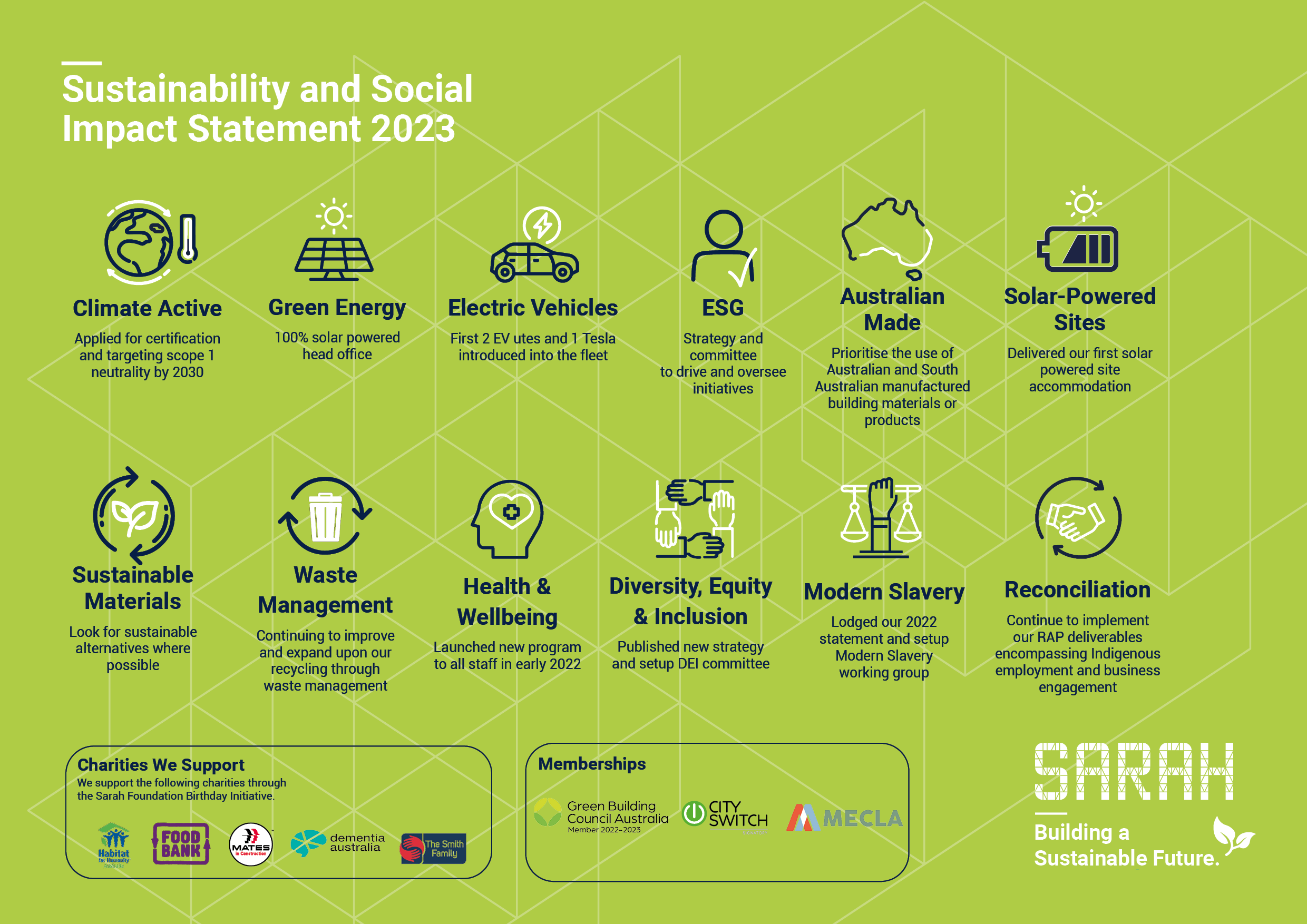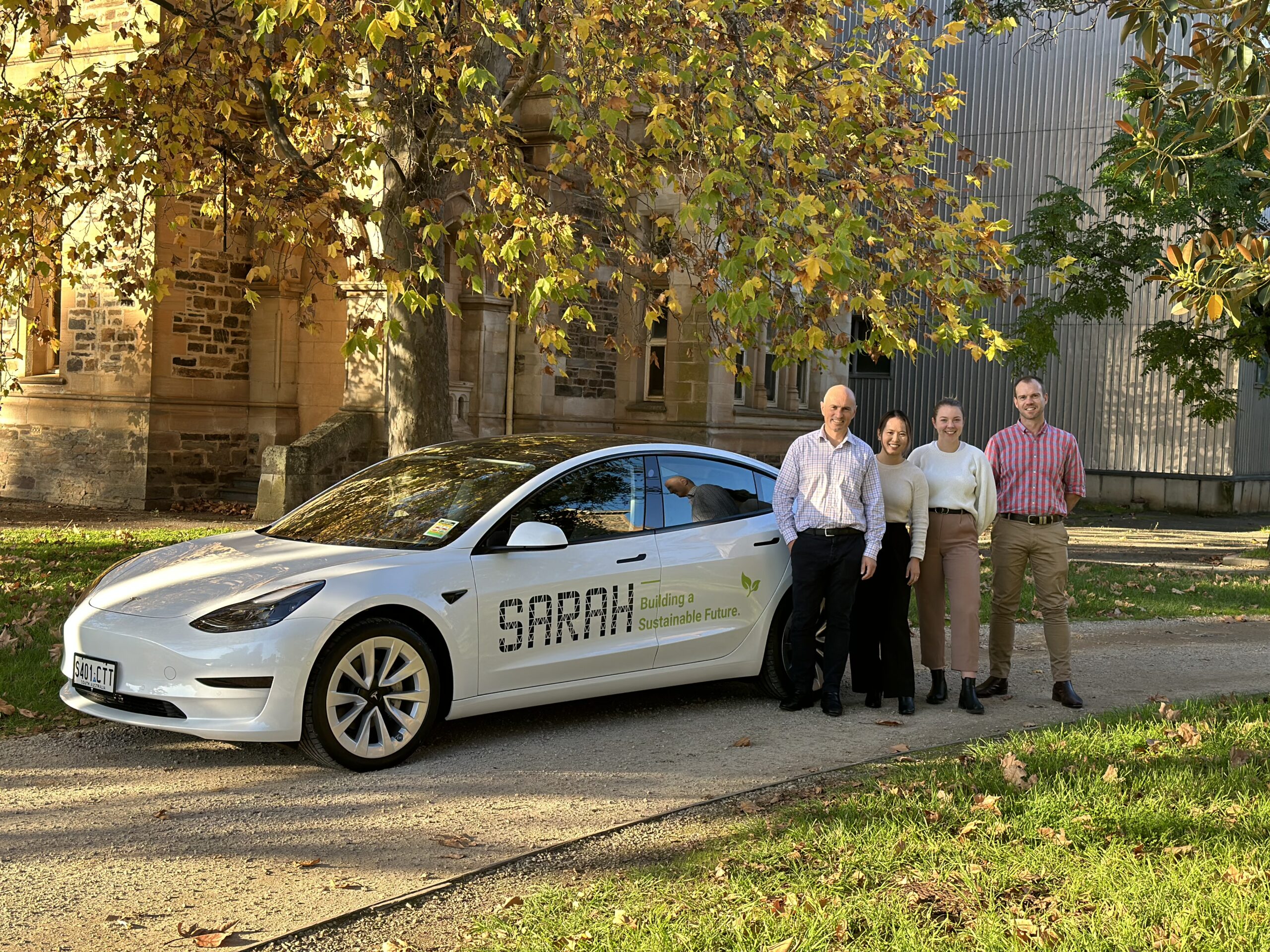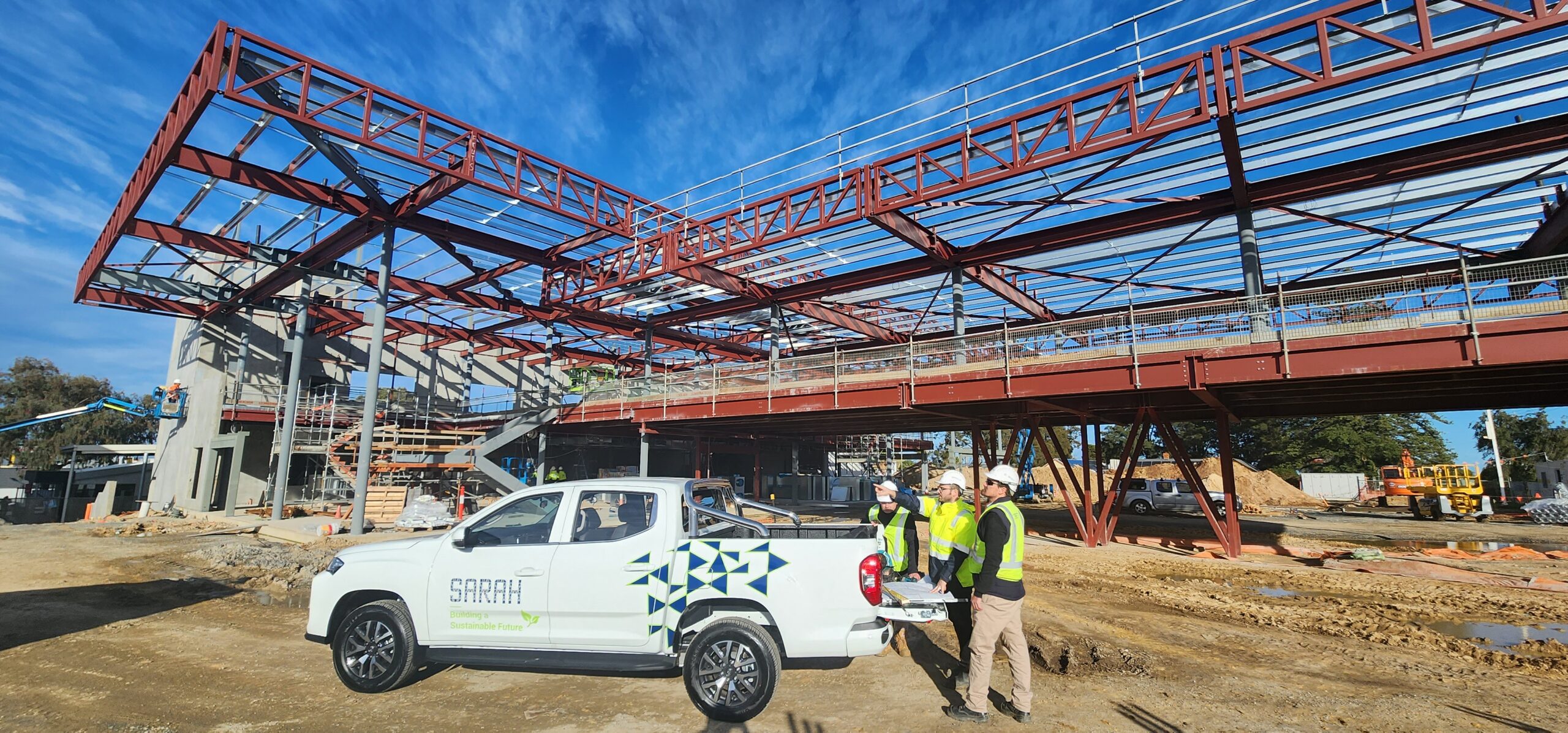Making an Impact and Choosing Change when it Comes to Sustainability

Change is a Choice
The global construction industry accounts for 38% of all carbon emissions, due to the supply chain using fossil fuels to manufacture goods, and construction sites using construction materials with embodied carbon. To reach net-zero, the International Energy Agency has estimated that direct building carbon emissions need to fall by 50% by 2030, or around 6% per year.
As a leading builder and constructor, Sarah plays an important role in South Australia’s economic prosperity and future sustainability. In early 2022, we recognised a need to formalise our sustainability initiatives, and to provide a framework for developing, driving, monitoring, and reporting on our commitments. Our Sustainability Committee comprises 14 self-nominated staff whose passion for change has already laid the groundwork to meet a range of short-term goals and focus on long-term commitments.
As well as manage our own emissions, we understand that we can impact the broader industry by sharing our learnings and achievements with our clients, suppliers and subcontractors. We know that impacts are broader than construction materials and methodologies and also include social sustainability outcomes.
Sarah has developed and funded several initiatives to address a range of social needs in the communities that give us social licence to operate, and we also carefully evaluate where and who makes our building materials to eliminate modern slavery impacts.
But we know that real change is only possible when working collaboratively, and we have made a choice to invest our experience, time and funds into organisations committed to wide-reaching systemic change.
“In the past when forming committees, I have often found that it can be difficult to gain momentum, but this has been quite the opposite experience. The staff members who volunteered for the Sustainability Commitment have been highly engaged from the start and have driven some very significant achievements in only 18 months.”
Matt Woodrow, CEO, Sarah Group Holdings

Strong Sustainability Leadership
Our Senior Leadership Group has always sought to understand what is important to our staff, and increasingly, sustainability has emerged as a priority. When we asked for nominations to form a Sustainability Committee, I was overwhelmed by the level of engagement from across the business.
Sarah’s Sustainability Committee is chaired by Group Executive of QHSE & Sustainability, Dena English, and the 14-strong passionate committee members are responsible for setting our Sustainability Strategy and developing and driving initiatives to meet its short-term and long-term goals. These goals have been carefully developed with leading sustainability consultants and are aligned with the United Nation’s (UN) Sustainable Development Goals.
I am particularly proud of Sarah’s involvement with organisations driving and supporting change at a national and international level, including the Materials and Embodied Carbon Leaders’ Alliance (or MECLA) which drives the reduction of embodied carbon in the building and construction industry, and CitySwitch, focusing on increasing energy efficiency of commercial buildings.
Our investment in these organisations is unusual for businesses of Sarah’s scale, but we believe we have a responsibility to lead positive change.
“Sustainability can be a difficult topic to understand, as it encompasses so many facets. We are working hard to communicate the opportunities and benefits across our personnel, and planning for initiatives to work alongside our subcontractors and suppliers to meet common goals.”
Dena English, Group Executive – QHSE & Sustainability, Sarah Constructions
Reaching our Climate Action Goal
Sarah is committed to reaching a 50% reduction in its carbon footprint by 2030 (aligned to the UN’s Sustainability Goal 13 and the International Energy Agency’s estimate for the industry to reach net-zero). We are in the process of becoming Climate Active certified – awarded to organisations that have reached a state of carbon neutrality against the requirements of the Climate Active Carbon Neutral Standard.
Sarah’s Sustainability Committee is calculating greenhouse gas emissions generated across the business and researching and adopting initiatives to reduce emissions by investing in new technology or changing the way we build. For example, we are trialling electric vehicles and researching alternative materials with more sustainable manufacturing and whole of life attributes.
Any remaining emissions are balanced by purchasing carbon offsets from activities that prevent, reduce, or remove greenhouse gas emissions, and Sarah is proudly investing in two biodiversity and rejuvenation projects operated by First Nations organisations.
The Wilinggin Fire Project in Western Australia and the Olkola Ajin Savannah Burning Project in Queensland manage early burning programs with ‘cool fire’ to avoid subsequent wildfires that burn hotter, longer and produce significantly more emissions.
Importantly, our involvement in these critical projects also contributes to our Reconciliation Action Plan, or RAP, targets and our commitment to social sustainability.

A Focus on Reuse and Repurposing
The UN’s Sustainable Development Goal 12 is focused on the sustainable and responsible consumption and production of materials.
Sarah is committed to a long-term goal of a 50% reduction in carbon energy and waste through digital modelling and sustainable purchasing. Our corporate offices are 100% powered by green energy, and the Committee is actively working towards all project sites maximising green energy consumption.
Sarah’s modular build team is working with the Committee to develop sustainable solutions and eliminate emissions generated by site facilities, by incorporating solar and recycled water technologies. We are also investing significant resources in research and development regarding reuse and repurposing of materials when we deconstruct existing buildings and infrastructure.
Sarah’s in-house digital engineering team is using Building Information Modelling, or BIM, designing buildings to be constructed with less waste, and developing designs to allow deconstruction for maximum reuse of elements at the end of the building’s life cycle.
Whilst almost all our computer equipment is given a second useful life; refurbished and donated to social not-for-profit organisations for the benefit of the communities that provide us with the social licence to operate.
When looking at the achievements driven by Sarah’s Sustainability Committee over the past 18 months, I am confident that we will continue to demonstrate responsible sustainability leadership in the South Australian industry.